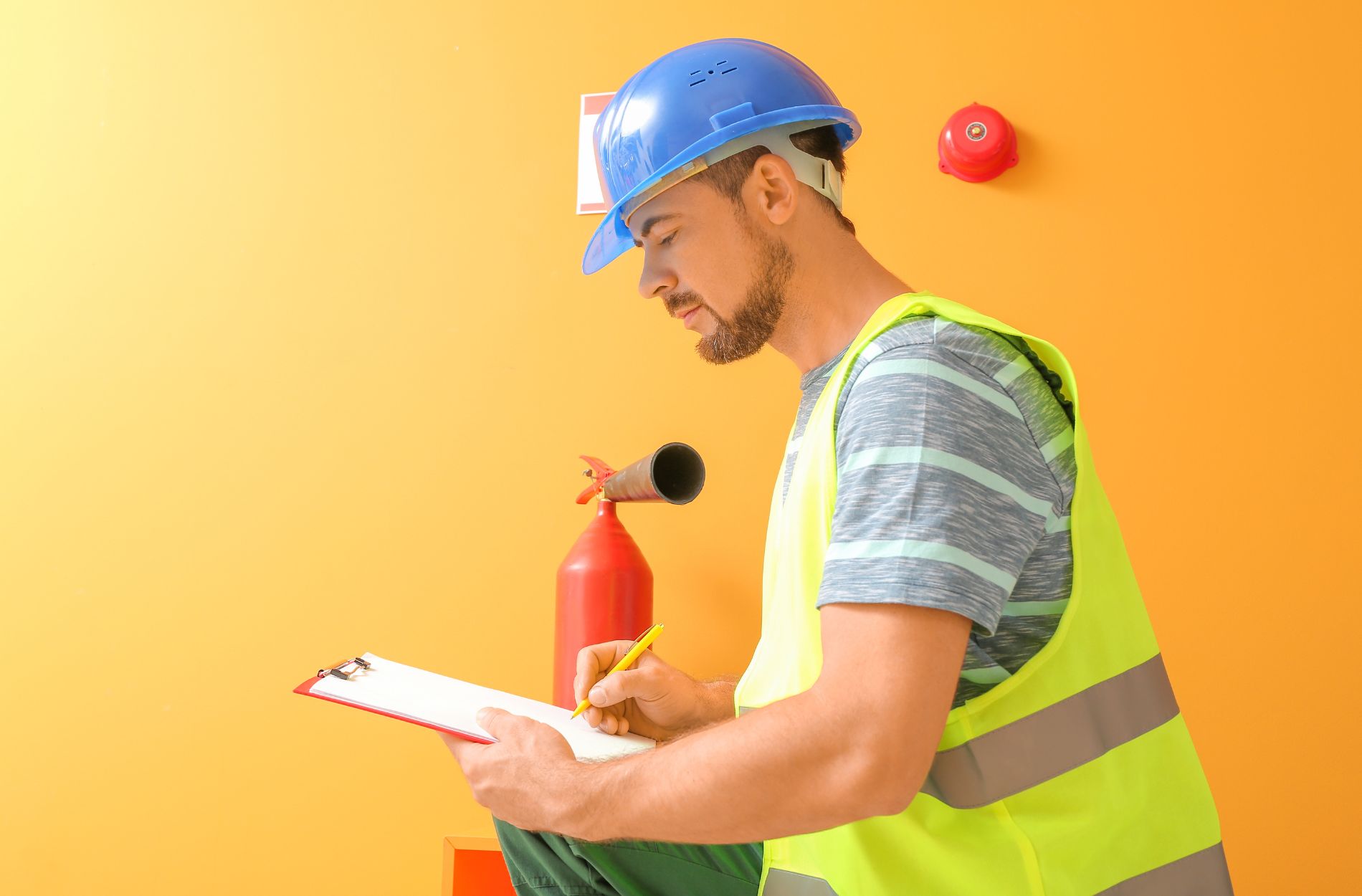Conducting a fire risk assessment is crucial for the safety of any property in Scotland. It helps identify potential fire hazards and ensures that measures are in place to reduce risks. Whether you own a business, manage a building, or are simply responsible for fire safety, knowing how to carry out a proper fire risk assessment is essential.
Understanding the specific fire safety regulations in Scotland is the first step. These laws set the standards for what needs to be done to keep people safe. Adhering to these regulations protects not just the property but also the lives of everyone who uses it. Ignoring or neglecting these requirements can lead to severe consequences, including legal penalties and increased fire risks.
Learning how to perform a fire risk assessment helps you spot dangers before they become serious problems. This involves a series of steps that include identifying fire hazards, evaluating risks, and implementing safety measures. Knowing the common mistakes to avoid ensures that the assessment is thorough and effective.
In this guide, we will walk you through what you need to know about fire safety regulations in Scotland, the steps to conduct a fire risk assessment, common pitfalls to avoid, and frequently asked questions. By understanding these key elements, you can ensure your property is safe and compliant.
Understand Fire Safety Regulations in Scotland
Fire safety regulations in Scotland ensure that all properties adhere to the standards required to keep people safe from fire hazards. The key piece of legislation is the Fire (Scotland) Act 2005, which outlines the responsibilities for fire safety in non-domestic premises. Under this act, a ‘responsible person’ must conduct regular fire risk assessments and ensure the safety measures are in place and maintained.
The regulations require that you identify fire hazards, evaluate the risks to people from these hazards, and put measures in place to reduce or eliminate these risks. For example, you must ensure that fire alarms, extinguishers, and emergency lighting are present and functional. Additionally, regular training for staff and fire drills help ensure everyone knows what to do in case of a fire.
Adherence to these regulations is not just a legal requirement but also a critical component of safety management. Failing to comply with fire safety laws can lead to severe penalties, including fines and imprisonment, not to mention the increased risk of fire incidents.
By understanding and following these fire safety regulations, you can create a safer environment for everyone using the property. Knowing your responsibilities and the legal requirements helps ensure that all necessary precautions are taken to prevent fires and protect lives.
Steps to Conduct a Fire Risk Assessment
Conducting a fire risk assessment involves several steps to identify potential hazards and implement safety measures. Here is a step-by-step guide to help you perform a thorough assessment:
1. Identify Fire Hazards:
– Look for anything that could start a fire, such as electrical equipment, heating sources, and open flames.
– Identify materials that could fuel a fire, like paper, wood, or flammable liquids.
2. Determine Who Is at Risk:
– Consider everyone who might be on the premises, including employees, visitors, and contractors.
– Pay special attention to people who might be especially vulnerable, such as those with disabilities or children.
3. Evaluate and Reduce Risks:
– Assess the likelihood and potential severity of a fire starting and the risk it poses to people.
– Implement measures to reduce or eliminate these risks. For example, keep flammable materials away from heat sources and ensure proper storage of hazardous substances.
4. Record Your Findings:
– Document all hazards identified, the people at risk, and the measures taken to reduce risks.
– Keep records updated and review them regularly to ensure ongoing compliance.
5. Prepare an Emergency Plan:
– Develop a clear plan for evacuation in case of a fire, including exit routes and assembly points.
– Ensure all staff are aware of the plan and conduct regular fire drills to practice it.
6. Review and Update:
– Regularly review your fire risk assessment and update it if there are significant changes to the premises or how it is used.
– Ensure that all fire safety equipment is maintained and in good working order.
By following these steps, you can effectively identify and manage fire risks, ensuring the safety of everyone on the property. Keeping your fire risk assessment up to date and thorough is essential in maintaining a safe environment.
Common Mistakes to Avoid During a Fire Risk Assessment
Avoiding common mistakes during a fire risk assessment ensures the safety measures are effective and thorough. Here are some frequent errors and tips to prevent them:
1. Overlooking Hidden Hazards:
– Forgetting to check less obvious areas such as storage rooms, basements, attics, and behind machinery where flammable materials may be kept.
– Always inspect every part of the building to identify all possible fire risks.
2. Inadequate Documentation:
– Failing to properly record findings and safety measures can lead to confusion and non-compliance.
– Keep detailed and accurate records of all hazards identified and steps taken to mitigate them.
3. Ignoring Specialist Equipment:
– Not considering the need for specialised fire safety equipment like extinguishers for electrical fires or blankets for small kitchen fires.
– Ensure you have the right type of fire-fighting tools for the specific risks in your premises.
4. Poor Training and Communication:
– Staff unaware of fire safety measures can hinder evacuation plans.
– Regularly train all employees on fire safety protocols and conduct fire drills.
5. Neglecting Regular Reviews:
– Only conducting one assessment and failing to review it can result in outdated safety information.
– Regularly update the fire risk assessment to reflect changes in the building’s layout or usage.
By paying attention to these mistakes, you can carry out a more comprehensive fire risk assessment, ensuring better safety for all building users.
FAQs About Fire Risk Assessments in Scotland
Understanding fire risk assessments can be confusing. Here are answers to some frequently asked questions to clarify common concerns:
1. Do All Properties Need a Fire Risk Assessment?
Yes, all non-domestic properties must have a fire risk assessment. This includes businesses, public buildings, and multi-occupancy residential buildings.
2. How Often Should Fire Risk Assessments Be Reviewed?
You should review your fire risk assessment at least once a year or whenever there are significant changes to the building or its use. More frequent reviews might be needed for high-risk environments.
3. Who Is Responsible for Conducting a Fire Risk Assessment?
A ‘responsible person’, such as the employer, owner, or occupier of the premises, is legally required to conduct or arrange for a fire risk assessment.
4. What Are the Consequences of Not Completing a Fire Risk Assessment?
Failing to complete a fire risk assessment can result in severe penalties, including fines and imprisonment. It also increases the risk of fire-related incidents.
5. How Do I Choose a Qualified Fire Risk Assessor?
Look for assessors with relevant qualifications and memberships in recognised bodies. Seek recommendations and check reviews to ensure they have the necessary experience.
These FAQs help clear up confusion around fire risk assessments, ensuring you know what’s required and how to comply with fire safety laws.
Conclusion
Conducting a fire risk assessment is vital for the safety and compliance of any property in Scotland. By understanding the fire safety regulations, following the steps to conduct an effective assessment, and avoiding common mistakes, you ensure a safer environment for everyone. The importance of regularly reviewing and updating your fire risk assessment cannot be overstated, as it guarantees continued compliance and safety.
By addressing the commonly asked questions, this guide provides clarity on the key aspects of fire risk assessments, helping you navigate the process with confidence. Regular fire drills and proper training for everyone involved further enhance safety measures, ensuring preparedness in case of an emergency.
For expert guidance and comprehensive support in completing your fire risk assessment, contact CR Training. Our experienced team can help you meet all legal requirements and enhance the safety of your property. Visit our website today to get started and ensure your property is compliant and secure.




